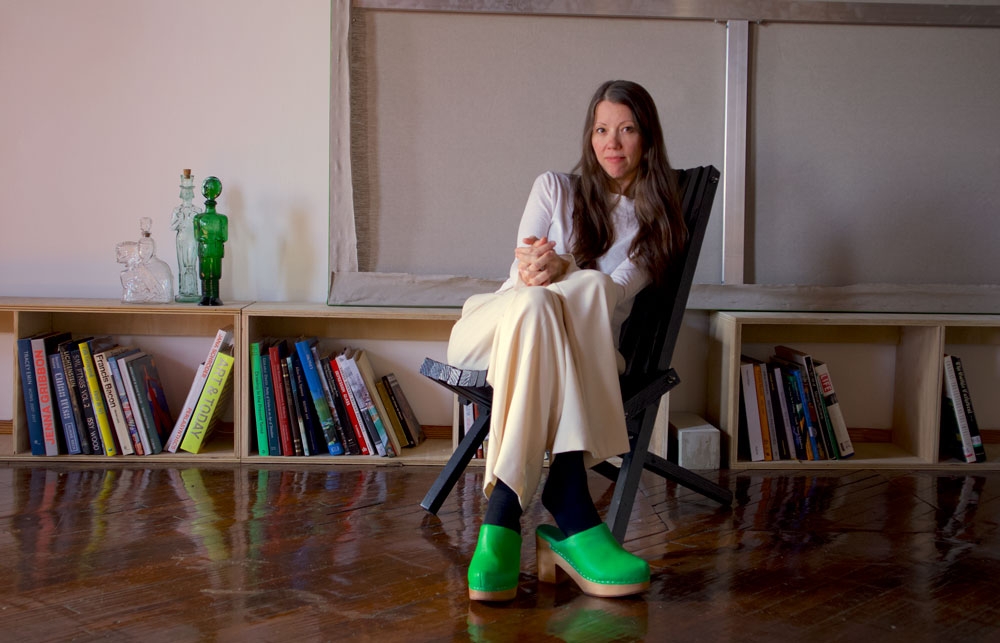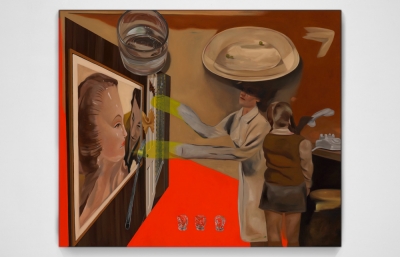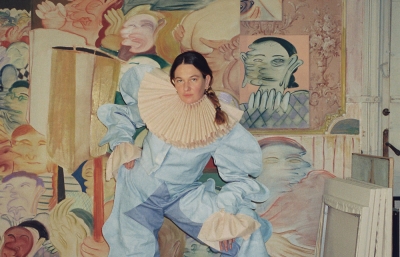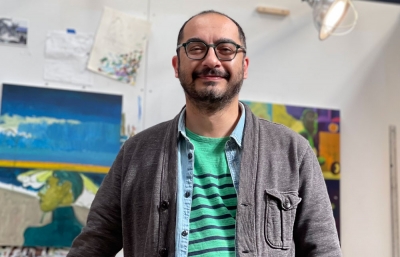Are your inspirations random, emerging from the day-to-day, or do you find certain routines motivating?
I’d say my works are always grounded in personal undertones. I’m very interested in human beings and how we interact. Random imagery finds its way into my mind, things I’ve observed without consciously noticing. Layers begin to emerge, like coming through fog. I try to jot down a little thumbnail of what I see and this will inform the overall aesthetic. The paintings change as I go. Every now and then I’ll see one with total clarity, like “A Fork In It” from 2020. I had recently closed a heartbreaking path to someone toxic from my life. I ached, but for my sanity, had to call it done and over. Many paintings were created with this undertone, this painting broke ground for me, sharing awareness and standing up for oneself. Closing a chapter... pruning a dying leaf to stimulate new growth. “A Fork In It” is one of my absolute favorite paintings. It lifted a lot of weight from me internally.
Having lived on both coasts, as well as in Bristol, England, have you found that different locations create different moods or social interactions?
Oh, yes! I don’t think one can move and not expect to be changed in some way! Something inside of me likes to be reminded of how fragile and small we are. Moving and traveling gives me a great perspective on the vastness of the earth, as well as other points of view, upbringings, lifestyles, morals, and culture. Seasons! I can definitely tell you while living in England I was always depressed during the dark winter months. But I welcomed all the feelings I experienced, the new surroundings. Discovering is key to growth. This all contributes to the subjects in the paintings as they develop. My latest move was in 2020 to Philly. I can’t say enough good things about my neighborhood, and the people we’ve grown to call friends. The move gave us a chance to become first-time homeowners, and this was the subject of my last exhibition with AishoNanzuka Gallery in Hong Kong. Because we moved during the Covid lockdown, interiors became very central to my interest. And the homes here are so old with so much character. Nothing like ’80s Los Angeles apartments! I suddenly felt very adult, living in a 1900 Victorian colonial inside a city with such a rich history. I’m still very interested in exploring this narrative as the unveiling of this city continues.
I’m always fascinated by the relationship between creative output and dreams, especially since I don’t ever remember mine. I’m guessing you have an active dream life. Does it come into play with your work?
Not at all! Haha! I do have wild dreams, but they are always, always dreams where I am trying to find a place to pee—always creative spots as there is never a working bathroom. I can’t even share them because they are so embarrassing. I will share one of the most lucid dreams I've ever had. I’m convinced today that I was there witnessing something. I was hovering above a big city up high in the sky. I looked to my left and a man was floating up. He stopped just short above me and opened up a hole in the sky to turn a knob on what looked like an old clock. Just as he finished he realized I was looking at him. He quickly closed the hole and took a hard sideways fall straight down. I woke with a jolt. I don’t think I could ever paint that scene because I actually saw it with what felt like real eyes. It would never be right.
What is your painting routine, as in time of day, duration, and where does it all take place? Do you work on one at a time or many at once?
I wake up to have a cup of tea with my husband, then drive down into Philly, Old Kensington, to my studio. I work until about 8pm every night, this year, seven days a week. I’ve been working at home on the weekends in a little home studio space just to break up the week. I always have quite a few things going at once.












